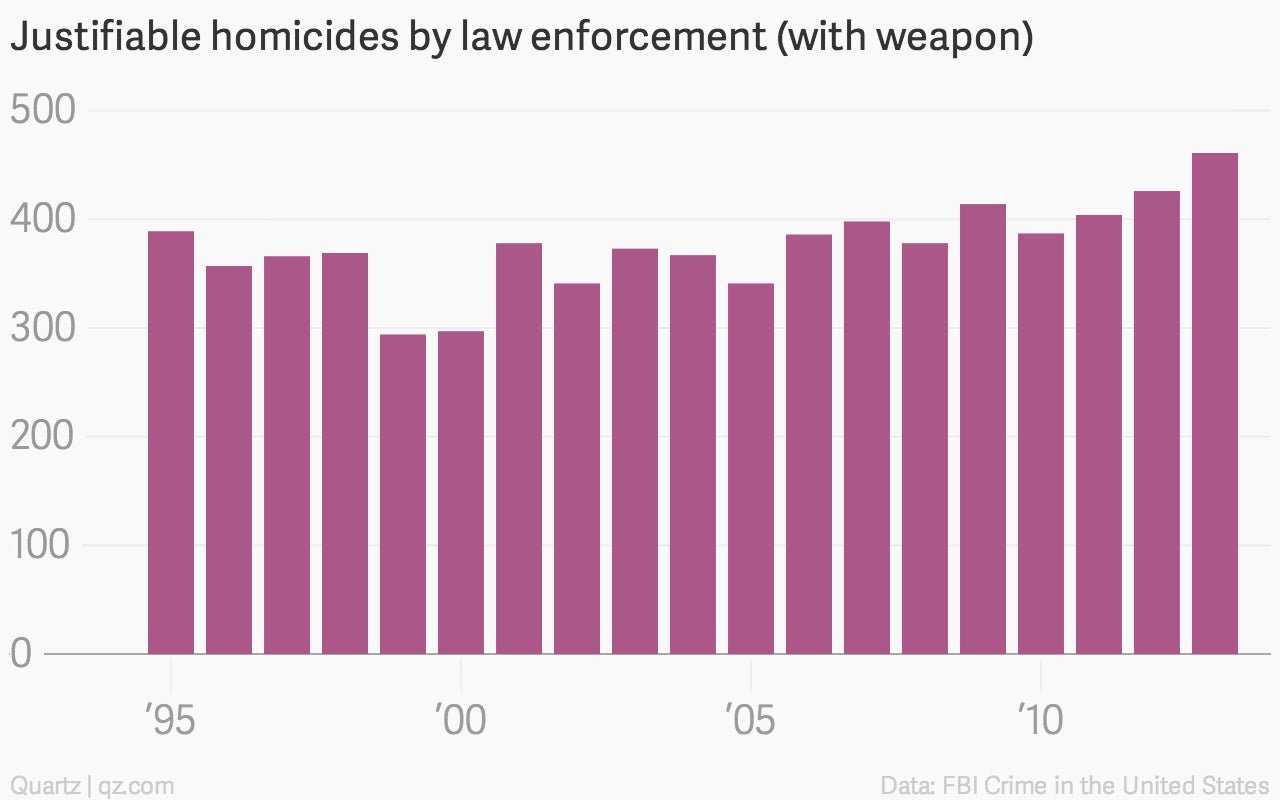Why data about police killings is largely unhelpful
Today, following an investigation of 600 incidents of use of force by police officers between 2010 and 2013 in Cleveland, where an officer shot a 12-year-old boy because he was wielding a toy gun, US attorney general Eric Holder said there was cause to believe Cleveland police have engaged in a pattern of using excessive force.


Today, following an investigation of 600 incidents of use of force by police officers between 2010 and 2013 in Cleveland, where an officer shot a 12-year-old boy because he was wielding a toy gun, US attorney general Eric Holder said there was cause to believe Cleveland police have engaged in a pattern of using excessive force.
Citing the deaths of Michael Brown in Ferguson, Missouri, and Eric Garner in New York, both at the hands of police officers, Holder said: “The tragic losses of these and far too many other Americans, including just last month the shooting death of 12-year-old Tamir Rice here in Cleveland, have really raised urgent national questions.”
But answering these questions with the help of the available statistics on police killings may prove to be very difficult. If not impossible. The Wall Street Journal published a blockbuster report yesterday, by Rob Barry and Coulter Jones, showing the discrepancies in official statistics about police killings. There’s a similar issue with the data about complaints about the use of excessive force by police. Data about police killings from three national sources—the FBI, the Centers for Disease Control and Prevention and the Bureau of Justice Statistics—diverge significantly, so the Journal asked 110 of the largest police departments in the country to provide their internal statistics. They found that the FBI numbers were lower by 45% for cases between 2007 and 2012 in 105 of those departments. Some of the cases were not reported to the FBI by local agencies, and some were misattributed.
Police departments are not required to hand over their internal information to the FBI’s uniform crime reporting program, hence the problem.
Here’s a more detailed look at the FBI data, going back to 1995.

Even just this data indicates discrepancies, with some FBI spreadsheets showing 387 justifiable homicides for 2010, and some 397. (Overall, the number remains relatively constant at around 400, with a slight, if erratic increase in the number of killings recently, in both local and FBI data sets.)